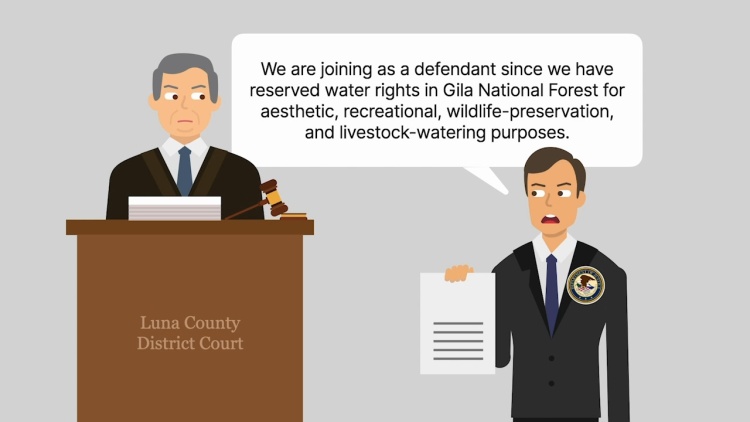United States v. New Mexico
United States Supreme Court
438 U.S. 696 (1978)
- Written by Melanie Moultry, JD
Facts
The United States (government) (defendant) claimed reserved rights to an instream water flow in the Gila National Forest for aesthetic, environmental, recreational, fishing, and livestock-watering purposes. In asserting its reserved water rights, the government invoked the implied-reservation-of-water-rights doctrine to claim an implied right to the water. The State of New Mexico (plaintiff) initiated a water-rights adjudication proceeding against the government. The state trial court found that the government lacked reserved rights to the instream water flow, and that state law governed the allocation of stock-watering rights. The government appealed. The Supreme Court of New Mexico considered whether the Organic Administration Act of 1897 (OAA) or the Multiple-Use Sustained-Yield Act of 1960 (MUSY) authorized federal reserved rights. The OAA provided that national forests existed “to improve and protect the forest within the boundaries, or for the purpose of securing favorable conditions of water flows, and to furnish a continuous supply of timber.” The MUSY expanded the purposes of national forests to include outdoor recreation, range, timber, watershed, wildlife preservation, and fishing. The state supreme court concluded that the OAA did not authorize the government’s reserved rights, and that the MUSY did not authorize any rights not provided by the OAA. The United States Supreme Court granted certiorari.
Rule of Law
Issue
Holding and Reasoning (Rehnquist, J.)
Dissent (Powell, J.)
What to do next…
Here's why 899,000 law students have relied on our case briefs:
- Written by law professors and practitioners, not other law students. 47,000 briefs, keyed to 994 casebooks. Top-notch customer support.
- The right amount of information, includes the facts, issues, rule of law, holding and reasoning, and any concurrences and dissents.
- Access in your classes, works on your mobile and tablet. Massive library of related video lessons and high quality multiple-choice questions.
- Easy to use, uniform format for every case brief. Written in plain English, not in legalese. Our briefs summarize and simplify; they don’t just repeat the court’s language.





